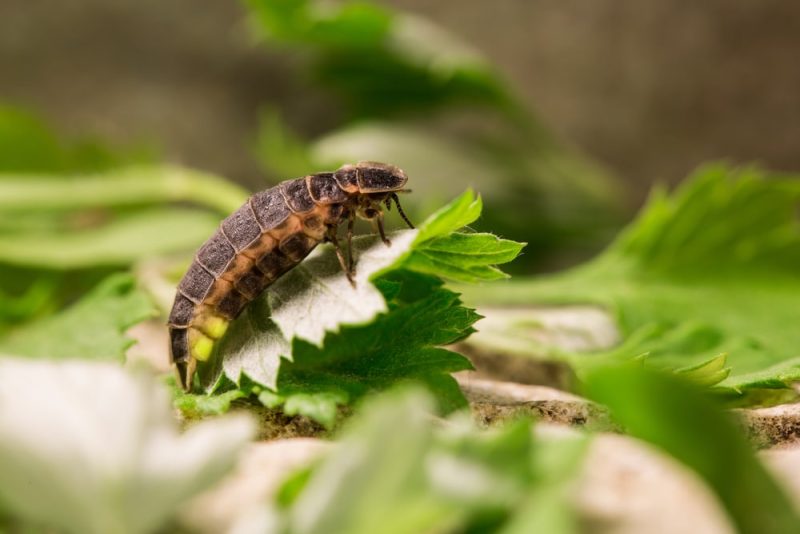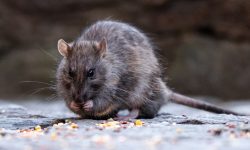Fireflies are some of the most magical insects found across forests, wetlands, and warm summer meadows. Their glowing bodies create unforgettable nighttime scenes, but behind their gentle light lies a surprisingly complex diet. Understanding what fireflies eat helps explain their behavior, life cycle, and even why their populations rise or fall in certain regions.
While adult fireflies are known for their flashing courtship dances, their eating habits are less familiar to most people. Some adults eat very little, while others hunt actively at night. Their larvae, however, are much more voracious and depend on nutrient-rich prey hidden beneath soil and leaf litter.
This detailed guide explores exactly what fireflies eat, how their diets change as they grow, and the 20 foods fireflies love the most — from soft-bodied insects to tiny snails and plant fluids. Whether you’re a nature lover, gardener, or simply fascinated by glowing insects, this complete dietary breakdown reveals everything you need to know.
Understanding the Firefly Diet

How Fireflies Eat
Fireflies feed using specialized mouthparts adapted to their life stage. Larvae have sharp mandibles shaped like tiny hooks that inject digestive enzymes into prey. Adults, however, often have reduced mouthparts designed mainly for consuming nectar or plant fluids rather than chewing solid food.
What Firefly Larvae Eat
Larvae, commonly called “glowworms,” are fierce predators. They live in moist soil, decaying logs, and leaf litter where they hunt soft-bodied invertebrates. Their protein-rich diet fuels rapid development and supports their bioluminescent organs.
What Adult Fireflies Eat
Many adult fireflies eat little to nothing, surviving on stored energy from their larval stage. Others sip nectar, honeydew, or plant juices. A few species are predatory, feeding on smaller fireflies or soft insects to maintain energy during mating season.
20 Foods Fireflies Love the Most
1. Soft-Bodied Larvae
Soft-bodied insect larvae are the primary prey for firefly larvae living in moist soil. These larvae, such as beetle grubs and small fly maggots, are easy to pierce with the firefly’s sharp mandibles. Their soft tissues allow quick digestion, giving larvae the steady nourishment they need during early development.
Because these larvae hold a high percentage of water, they provide both hydration and essential nutrients at the same time. This is especially important in warm environments where moisture evaporates quickly. Firefly larvae rely on this constant moisture to keep their bodies functioning efficiently.
Most soft-bodied larvae live in the same microhabitats as fireflies — compost piles, forest floors, and damp garden beds. This makes them easy to locate, helping young fireflies conserve energy while hunting.
2. Slugs
Slugs are a favorite prey because they move slowly and have soft bodies that are easy to consume. Firefly larvae attach themselves firmly to a slug’s surface and inject digestive enzymes that liquefy internal tissues. This allows them to drink their meal rather than chew it.
The high moisture content of slugs provides excellent hydration, which is crucial for larvae living in soil that dries out quickly during hot seasons. This hydration also supports smooth molting between larval stages.
Because slugs thrive in shaded, humid areas, they remain reliable prey throughout the year. This makes them an essential food source during periods when other insects become scarce.
3. Snails
Snails with soft, thin shells are another important food source for firefly larvae. Young snails are especially vulnerable because their shells have not fully hardened. Fireflies inject enzymes into the snail’s body, breaking down tissues for easy consumption.
Snails are nutrient-rich, and their internal fluids supply protein, minerals, and moisture. These nutrients support the growth of the firefly’s bioluminescent organs, which become more developed as the larva matures.
Snails emerge more frequently after rainfall, giving larvae abundant opportunities to feed. This makes them a seasonal but extremely valuable dietary component.
4. Earthworms
Earthworms are easy for firefly larvae to locate through soil vibrations. Once the larva detects movement, it bites the worm near the head to immobilize it. It then releases digestive enzymes to soften the tissues before consuming them.
Earthworms offer a balanced combination of water and protein, helping larvae maintain energy during active hunting periods. Their high moisture level also keeps larvae hydrated underground.
Since earthworms are plentiful in most habitats, they ensure that fireflies have a dependable food source no matter the season.
5. Aphids
Adult fireflies sometimes feed on aphids clustered on leaves and stems. These small insects provide quick nutrients, and their bodies are easy to digest without much energy expenditure.
Aphids also produce honeydew, a sugary liquid that adult fireflies may drink for extra energy. Honeydew helps fuel flight, especially during peak mating season when adults are more active at night.
Because aphids appear in large colonies on garden plants, they offer a convenient food source whenever flowers or tree sap are limited.
6. Mites
Soil mites are tiny arthropods that firefly larvae frequently encounter beneath leaf litter. Their small size makes them perfect prey for newly hatched larvae that cannot yet overpower larger organisms.
These mites contain amino acids and natural fats that support early growth. Their soft bodies also make them easy to digest rapidly, allowing larvae to conserve energy.
In moist forest floors and compost areas, mite populations boom, providing reliable nourishment for developing glowworms.
7. Small Caterpillars
Young caterpillars provide excellent protein for firefly larvae. Their bodies are soft enough to pierce, and their internal fluids contain nutrients gathered from the plants they eat.
Larvae often hunt caterpillars hiding beneath leaves or clinging to stems. Many are nocturnal, just like fireflies, which increases the chance of encounters.
During periods when larval growth demands more energy, these nutrient-dense caterpillars help fireflies molt into larger stages successfully.
8. Ant Pupae
Firefly larvae sometimes infiltrate ant nests to steal pupae. These soft-bodied young ants provide concentrated proteins and fats essential for rapid growth.
Although ant colonies defend their young, a determined firefly larva can quickly grab a pupa and retreat. The reward is a highly nutritious meal that boosts development.
This behavior shows the impressive hunting ability and bravery of firefly larvae when food supplies are low.
9. Beetle Larvae
Beetle larvae living in decaying wood or soil are one of the richest protein sources for firefly larvae. Their soft bodies carry essential nutrients that help fuel long nights of hunting.
Fireflies locate these larvae by detecting movement or following tunnels within moist logs. Once found, the prey is subdued through a quick bite and digestive enzyme release.
Because beetle larvae appear in almost every damp habitat, they form a vital part of the glowworm diet across many regions.
10. Millipedes
Some firefly species have evolved to feed on small millipedes. Although millipedes have tough exteriors, firefly larvae use specialized enzymes to break down their defenses.
Inside, millipedes contain moisture, fats, and plant-derived nutrients that support steady larval growth. They provide a more substantial meal than many smaller prey types.
Millipedes also inhabit decaying forest floors, where firefly larvae spend much of their time, making them a convenient food option.
11. Springtails
Springtails are tiny soil insects that hop short distances but cannot escape a quick-moving firefly larva. Their small size makes them ideal first meals for larvae fresh out of the egg.
These insects contain moisture and minerals that aid early digestive development. Because they are numerous in moist soil, springtails help stabilize larval diets.
In habitats with limited prey diversity, springtails become especially important for the youngest larvae.
12. Termite Workers
Termite workers hidden in rotting logs offer high-value nutrition. Firefly larvae enter decaying wood tunnels and attack these soft-bodied insects easily.
Termites provide dense protein that supports rapid growth, especially for larvae preparing for later instars. Their fat reserves are also nutritious.
Because termites inhabit stable colonies, they create a predictable, year-round feeding opportunity for glowworms.
13. Fruit Sap
Adult fireflies sometimes drink sap from damaged fruit or tree bark. Sap provides natural sugars that fuel their nighttime flights during mating season.
This sugary liquid also helps adults maintain hydration, especially in hot environments where moisture is limited.
Fireflies often gather around fruit trees after storms or animal damage, making sap a convenient energy source.
14. Nectar
Some adult fireflies visit flowers to drink energy-rich nectar. This carbohydrate-dense food helps power short bursts of flight and supports mating activities.
Fireflies generally choose low, accessible flowers that bloom at dusk or nighttime. These include clover, goldenrod, and vetch.
Nectar feeding adds diversity to their diet and helps adults survive longer during the breeding season.
15. Honeydew
Honeydew, a sticky liquid produced by aphids and scale insects, offers immediate sugar for adult fireflies. They lick droplets from leaves, especially on humid nights when honeydew is abundant.
This food source requires minimal effort to obtain and provides quick energy during peak activity times.
Plants covered in honeydew often attract several fireflies, creating small feeding clusters.
16. Plant Fluids
Fireflies may pierce soft plant stems to extract sap when other food sources are low. Though not nutritionally rich, plant fluids offer hydration.
These fluids help adult fireflies survive dry spells when nectar and honeydew are scarce. Their feeding causes little to no harm to plants.
This behavior shows the insect’s adaptability and ability to use multiple food sources.
17. Decaying Plant Matter
Larvae often ingest small fragments of decomposing leaves while searching for prey. Though not a main food source, these fragments provide fiber and trace minerals.
Decaying plant material also hosts many small insects, making it a fertile hunting area for glowworms.
By consuming these fragments, larvae gain extra nutrients during transitions between larval stages.
18. Mushrooms
Moist mushrooms attract both insects and firefly larvae. Larvae may eat fungus directly or consume insects hiding beneath mushroom caps.
Mushrooms provide moisture and small amounts of nutrients that support survival during dry periods.
The cool, shaded microhabitat under mushrooms protects larvae from overheating while hunting.
19. Small Fireflies (Cannibalism)
Cannibalism occurs when larvae are extremely hungry or overcrowded. Stronger larvae may attack weaker ones, especially just after hatching.
This behavior provides a nutrient-dense meal that helps the surviving larva grow more quickly.
Though harsh, cannibalism increases the chances of at least some larvae reaching adulthood successfully.
20. Microorganism Fluids
Firefly larvae occasionally consume fluids from decomposing organic matter where microbes thrive. These fluids contain dissolved nutrients and natural enzymes.
Such feeding helps larvae survive periods when prey is limited, giving them backup nourishment.
This flexible diet allows firefly larvae to thrive in many environments, from forests to gardens.
FAQs About What Fireflies Eat
Do all fireflies eat the same foods?
No. Larvae are predators, while many adults consume nectar, sap, or almost nothing at all.
What do firefly larvae eat the most?
They primarily eat soft-bodied invertebrates such as slugs, snails, worms, and larvae.
Do adult fireflies eat insects?
Some species do, but many adults feed only on liquids like plant sap or nectar.
Can fireflies survive without eating?
Larvae cannot, but adults may survive off stored energy from their larval stage.
Do fireflies eat mosquitoes?
No. Fireflies rarely eat flying insects; larvae hunt only ground-dwelling prey.
Are fireflies harmful to plants?
Generally no. Their feeding causes minimal damage since they consume small amounts of sap.
What foods attract fireflies?
Moist habitats, decaying logs, and areas rich in slugs or snails support firefly larvae.
Do fireflies drink water?
They obtain moisture from sap, nectar, and prey rather than free-standing water.
Final Thoughts
Fireflies are remarkable insects with diets that shift dramatically from larval predators to adults that often rely on plant fluids. By understanding what fireflies eat, you can better support their populations and enjoy their magical glow each summer.






